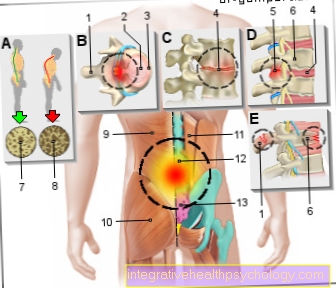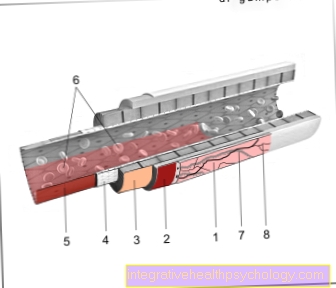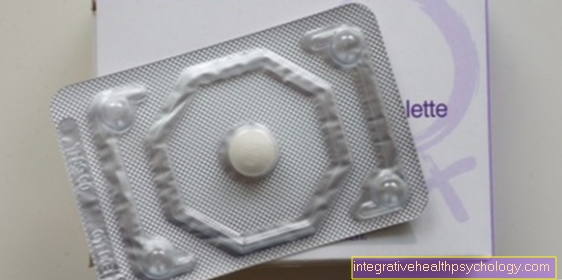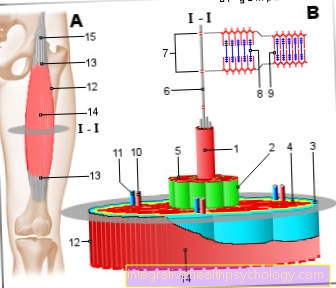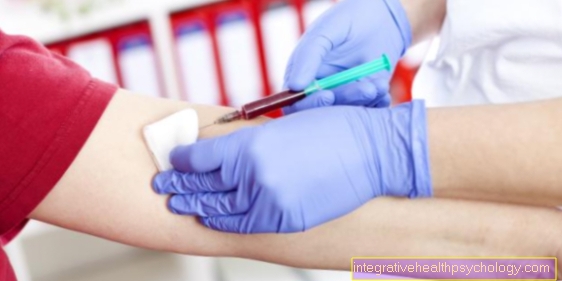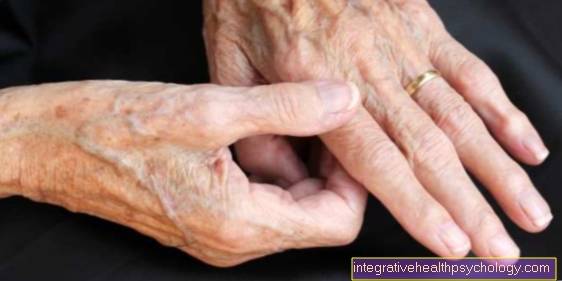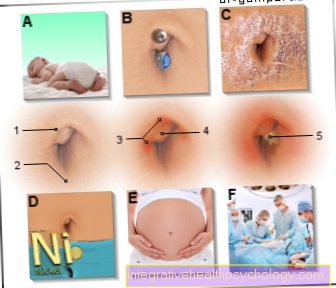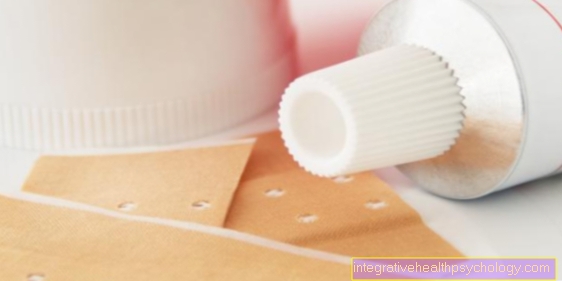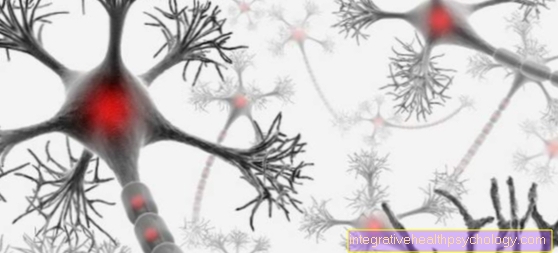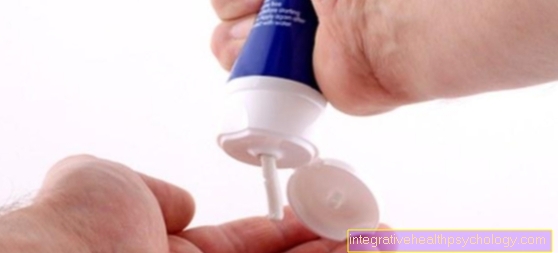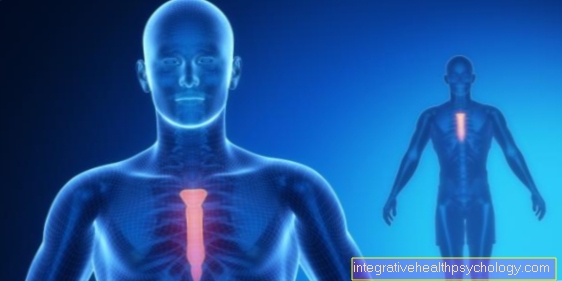Testicular prosthesis
General
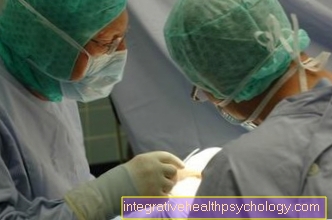
A testicular prosthesis is an implant of the testicle that can be inserted into the scrotum if the body's own testicle is no longer present or has never been present.
Since the testicular implant cannot take over any bodily function, the procedure can be assigned to cosmetic or reconstructive surgery, depending on the indication. The modern implants are in no way inferior to the real testicles in terms of appearance and feel. In most cases, the affected person's health insurance will not cover the operation. The health insurance company will only undertake the reconstructive intervention if there are severe psychological impairments due to the missing testicle. The prognosis of the implanted testicle is very good. So it can be rare Rejection reactions but usually an implanted testicle can remain in the scrotum until the end of life.
Indications for a testicular prosthesis
The reasons for carrying out a testicular prosthesis implantation are very diverse. So there can be a distance of a functioning testicle. Sometimes the testicle is already due to a genetic defect from birth unavailable.
In most cases, only one testicle is missing while the other is still present. In rare cases, two testicular prostheses can also be implanted. A distinction must be made between innate and acquired causes.
Due to a genetic defect, one or both testicles may not or only partially develop. Also a Undescended testicles can in rare cases mean that a testicle has to be removed.
A number of different causes can lead to a testicle having to be implanted at some point in life. A Testicular tumor is usually treated by removing the affected testicle, thus a dangerous one metastasis of cancer does not occur. Even if, for example, after a pathological twisting of the testicle (medical: Testicular torsion) the blood vessels of the testicle are squeezed and as a result the affected testicle dies, it must be removed. Also a strong one injury of the testicle may result in the need to remove the testicle.
After removing the testicle, it is possible to insert a testicular prosthesis (implant) into the now empty scrotum. Whether such an operation makes sense in the individual situation should be clarified by the attending physician after a detailed assessment of the previous operations, previous illnesses and the psychological situation of the person concerned.
Side effects and risks
Although the implantation of a testicular prosthesis is a mostly uncomplicated Represents an intervention, the operation can still lead to side effects. Since it is an operation that is usually performed in general anesthetic performed, there are general risks associated with such an operation. However, the operation can be carried out through minimal incisions and is carried out away from vital organs, which is why the risks of this special operation are limited.
It should be noted that the insertion of such an implant is always the implantation of a Foreign body acts in the body. Such a foreign body can always Rejection reactions and Inflammation lead, which is why the implementation of the operation should be carefully considered. If Hormonal imbalances occur depends on whether there is a second functional testicle or whether both testicles are missing. As the testicles for the production of Sperm and testosterone are responsible, an impairment can occur especially in the absence of both testicles. If both testicles are missing, the production of sperm and testosterone is no longer given. The testosterone level should controlled and possibly a Substitution therapy (external supply of testosterone e.g. through tablets) to prevent the side effects of a testosterone deficiency.
Since the implanted testicular prosthesis cannot take over any function, the operation is cosmetic in nature and the advantages and disadvantages of the procedure should be discussed with the attending physician.
Contraindications
If the testicle is not formed or has been removed, there is often a desire to have a testicular prosthesis implantation performed. However, this is not always possible. Certain contraindications that would prevent the operation from being carried out must be ruled out before the operation. Which includes Inflammation the tissue into which the testicular implant is to be inserted. Damage caused by radiation therapy can also be a contraindication. Also acutely existing or already treated pus accumulations in the area of the testicle can represent an obstacle. It is recommended to use the testicular prosthesis first after growing out of the genital organs, since the testicles with the puberty grow and the size of the testicular prosthesis required can only be estimated with a fully grown testicle.
There may also be contraindications to performing an operation under general anesthesia. The attending physician will discuss possible contraindications in a detailed doctor-patient conversation and can thus decide whether the operation is possible.
surgery
The testicular transplant is a cosmetic procedure that takes place in general anesthetic is carried out. If it has been necessary to remove the body's own testicles, the implantation operation should take place a little further after this operation in order to ensure that the structures of the scrotum heal. Before the testicular prosthesis is implanted, the scrotum is usually empty.
Usually, an incision is made in the scrotum or in the groin and this is opened to insert the implant. The implant can be sutured to the scrotum using sutures. After the scrotum has been closed and the wound has healed, there are usually no traces of what was done after the operation, as the scar is usually well covered by the folds of the testicle.
The procedure itself usually only lasts 30-60 minutes.
forecast
Generally, the insertion of a testicular prosthesis is a relatively uncomplicated procedure.
The implant mainly helps people who are under psychological stress due to the removal of one or both testicles.
Since the testicular prosthesis differs little in shape and feel from a functional testicle, the testicular prosthesis is usually not recognizable as such for outsiders and the person concerned is accordingly satisfied with the implant.
Still should Contraindications be taken seriously in order to avoid serious consequences of the implantation of the testicular prosthesis.
If inflammation and rejection reactions do not occur, a testicular prosthesis can often in the body until the end of life remain.



